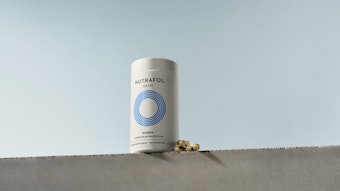Author's note: This dialogue, the first of a two-part series (see Part II), is based on a presentation given by Katerina Steventon, PhD, (KS) at the Anti-Ageing Skin Care Conference on June 12, 2012, in London. It establishes a conversation with Steve Barton (SB), a skin biologist, to discuss concerns and perceptions of British consumers related to skin care. Barton has extensive experience working with marketing teams to improve communication of skin care benefits to consumers by initiating communication between the consumer and the formulator.
KS: As a skin care consultant promoting skin health, my credibility stems from achieving results and alleviating skin concerns. The challenge is to find products that truly deliver visible benefits; there is not a single brand on the market that can address all skin types.
SB: You make two good points. I agree that credibility and satisfying (all) consumer needs are vital for sustainable success in cosmetic development; credibility with dermatological professionals and regulators is also present. However, I do believe visible benefits are being delivered to our consumers, and your struggle to find products that “truly deliver visible benefits” may be reflection of a “clinician’s” view. This has encouraged “clinical testing” on cosmetics, which, by definition, target (overall) appearance with no requirement for clinical change. This is further complicated since consumer self-assessment includes both emotional and rational judgments; some degree of “placebo effect” is evident for cosmetics.
On the second point, the consumer's needs comprise diverse characteristics under the skin aging umbrella. Developers work hard to understand the consumer's needs, but satisfying all these needs, even within one range, may be an unreasonable expectation. While this is difficult, companies now advertise products tested on a range of ethnicities.
Facial Skin Care
KS: The British facial skin care market has a value of approximately £1 billion (£0.88 billion in 2010), and is still growing despite the recession. Consumers pay attention to aging concerns in uncertain economic times, and the anti-aging category is strong. Launches with anti-aging claims, as defined by Mintel, are rising in the U.K., but usage of anti-aging skin care is lower in the U.K. than in the rest of Western Europe. The target group of consumers for anti-aging skin care is age 35+, specifically 45–65. Consumers are looking for these essential claims: moisturization (90%), anti-aging (32%) and radiance (6%). Desirable claims include “green, ethical, sustainable and botanical" with certification.
SB: Another challenge for a formulator is the definition of anti-aging skin care. Are all anti-aging claims the same? By analogy, hair conditioning was only credible as something separate to shampooing 30 year ago, but conditioning shampoos are common in today's market. Consumer experience has made this credible, but conditioners offer consumers more intensive sensory and objectively measured results. All facial moisturizers could be defined as anti-aging, as the majority will improve skin hydration and condition—key components of improving the signs of skin aging.
Like hair conditioners, there are high performance skin products that are desired by many consumers. The formulator must determine what type of anti-aging the consumer expects, be it protection, maintenance, improvement, dullness, wrinkles or uneven pigmentation.
The summary of the “essential claims” demonstrates the diversity of cosmetic end-points, and consumers will define these differently. These are rarely mutually exclusive or independent end-points, so “targeting” this with technology is rarely precise. Likewise, the techniques chosen to assess aged skin are rarely direct measures of one characteristic. Formulators have to decide which aspects to test and communicate to their consumers—simplifying the message and fulfilling expectation is a skill.
The “desirable” claims highlighted, again, have a strong emotional connection. The formulator often struggles to fulfill these needs without compromising on sensorial and performance criteria.
Aging Demographics and Society
KS: Skin is a visible organ of emotional expression and social communication. Skin condition impacts the perception of others and an individual's self-esteem. Aging baby boomers have grown old in a society fascinated with youth, beauty and celebrity. Dissatisfaction with facial appearance can cause distress, low self-esteem and compromised relationships. Our society views visible aging differently from internal diseases. Aging women, in particular are paid less attention and visual contact, making them feel invisible. They perceive greater pressure to look youthful at work, despite age discrimination legislation. Exposure to the ideal images in the media is detrimental at times to greater self-monitoring such as during menopause.
SB: This issue has received a lot of attention lately. We should continue to explore changing consumer needs and attitudes to skin aging, appearance and health since the emotional component of anti-aging is as important as the technological. It is also clear that within these issues there is a broad range of responses in consumers, as some strive for perfection (whether idealized in their own minds, society or advertising) while others will accept the inevitability of skin aging. The challenge for the formulator is how to fulfill these needs, demonstrate success and communicate this by connecting to the consumer's emotional needs.
Skin Types and Concerns
KS: There is little consensus on skin type definitions in the scientific community. British women are least likely to report dry skin compared to other European women. While 16% say they have dry skin, 38% report they have normal skin (50% > 65+) and 28% report combination skin. However, many women incorrectly diagnose their skin type. Women with oily skin (6%), prone to negative perception in the society, demonstrate better judgment in assessing their skin type. Up to 40% of the adult population suffers from low level acne. Cultural differences play a role in skin type assessment; however, other influencing factors include seasons, smoking, stress, nutrition, medication, hormonal changes and inadequate skin care routines.
SB: Without clear definitions of skin types, this should not be surprising. From a technical standpoint, dry/oily/combination/normal give only directional guidance to potential solutions. There have been some attempts to improve on this. As the industry learns more about changes in skin condition with time, geography and ethnicity, brain-skin interaction and the genetic component of skin aging, the industry's knowledge of consumer expectations and the ability of a product to fulfill consumer needs lags behind our knowledge of the potential routes to changing their skin. There is a need to simplify processes of skin aging to improve expectations for better defined consumer subgroups.
The British Skin Care Consumer
KS: The characteristics of the U.K. skin care market are pragmatism, comfort and convenience. The British skin care culture is low key and convenience driven. Time constraints dominate, making cleansing wipes and all-in-one products popular. However, there is a high penetration of moisturizers in the U.K. market with 86% of consumers using a face cream and 48% using an anti-aging cream. As British women do not understand the importance of a night cream, only 34% use it. People ask for no-hype claims and informed choice, as they want to make an independent decision. Cognitively, they consider the data on efficacy important but skin care choice is an emotional decision. Relaxed, comfortable and convenient product concepts are successful. Also, slow-paced Internet retail experience and personalized advice are valued.
SB: So we agree that the balance between communicating on both emotional and rational bases is important for formulators and marketers who want to fulfill consumer needs and increase their market share.
KS: It is important for the skin care industry to encourage consumers to consider themselves worth cosmetic expenditure. Skin care should be seen as a healthy activity rather than a frivolous vanity, and the industry has to avoid offering consumers the deception that aging can be stopped when it can just be experienced differently. The preventive role of skin care and good habits are difficult to enforce, and it is important to start teaching children early.










